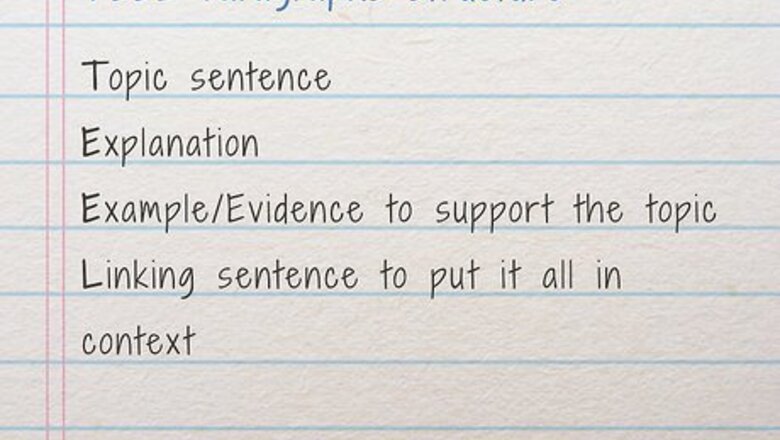
views
Learning the TEEL Structure
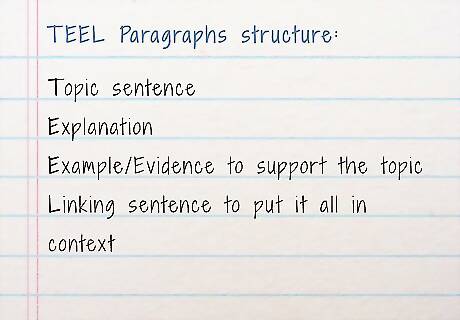
Start with a topic sentence (T). The T in TEEL stands for “Topic.” The topic sentence introduces the main idea of your paragraph or summarizes the argument you are trying to make. The topic sentence usually comes first in the paragraph. Keep your topic sentence clear and concise so that the reader can tell exactly what the paragraph is about. For example, your topic sentence might be “A zebra is a type of mammal.” You may have seen a variant on the TEEL structure called a PEEL paragraph. In a PEEL paragraph, the P stands for “Point,” i.e., the main point of the paragraph.
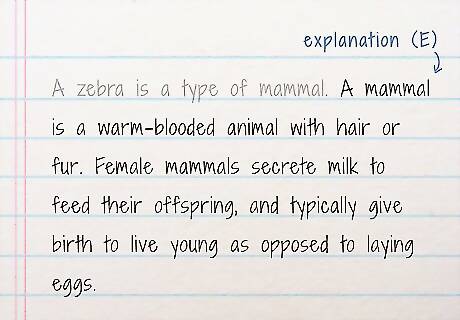
Provide an explanation (E). Next, provide 1 or 2 sentences explaining or elaborating on the topic. These sentences might provide context, clarify the meaning of the topic sentence, or go into more detail about the point(s) raised in the topic sentence. For example, your explanation might state, “A mammal is a warm-blooded animal with hair or fur. Female mammals secrete milk to feed their offspring, and typically give birth to live young as opposed to laying eggs.” Think about what kind of explanation or additional detail would benefit the reader. For example, are there terms in the topic sentence you need to define?
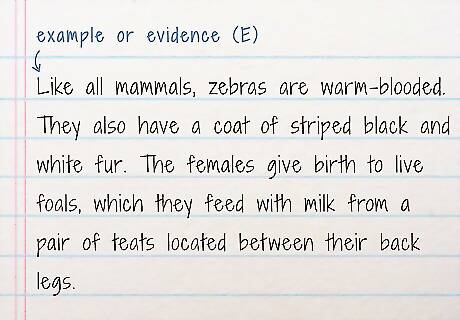
Back it up with an example or evidence (E). To support your topic, provide relevant examples or evidence. This will help show that your argument is credible. The second E in TEEL can stand for either “Example” or “Evidence.” Variation: Sometimes it’s helpful to include a “Comment” in your TEE(C)L paragraph after the Example/Evidence. For instance, this may be useful if you need to critique the evidence or provide an explanation to show how it supports your argument. For instance, in your paragraph about zebras, you could follow up your explanation by saying, “Like all mammals, zebras are warm-blooded. They also have a coat of striped black and white fur. The females give birth to live foals, which they feed with milk from a pair of teats located between their back legs.” You might have several examples or pieces of evidence to choose from. Try to pick the example or evidence that is most relevant and best supports your argument.

Wrap up with a link (L) to your main argument. The L in TEEL stands for “Link.” The final sentence of the TEEL paragraph puts your paragraph in context by connecting it to another idea. For example, you might use this sentence to summarize the argument of the paragraph itself, to link to the main argument of your essay, or to connect this paragraph to the next one. For example, you might sum up your paragraph on the zebra by saying, “Therefore, the zebra meets all the major criteria for being classified as a mammal.”
Perfecting Your TEEL Paragraph
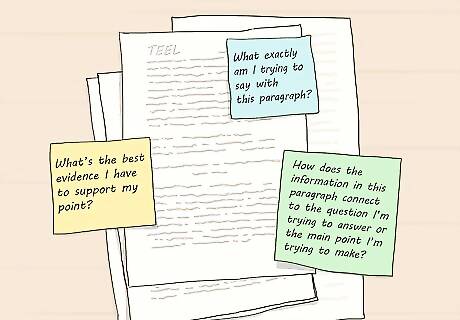
Brainstorm what you’d like to put in the paragraph before you start writing. Take a few minutes to think about it and jot down some ideas. Try writing a brief outline that contains all the information you’d like to include in the paragraph, following the TEEL format. You might ask yourself things like: “What exactly am I trying to say with this paragraph?” “What’s the best evidence I have to support my point?” “How does the information in this paragraph connect to the question I’m trying to answer or the main point I’m trying to make?”
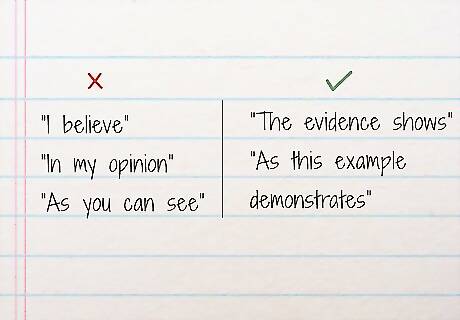
Write your paragraph in the third person. You’re most likely to use the TEEL paragraph structure in a formal essay. Unless your instructor of the directions for the assignment tells you otherwise, avoid using first or second-person expressions like “I believe,” “In my opinion,” or “As you can see.” Instead, stick to third person phrases, such as “The evidence shows,” or “As this example demonstrates.” There are some exceptions to this rule. For example, if you’re writing a personal essay for a college application, you might use the TEEL structure along with the first person.
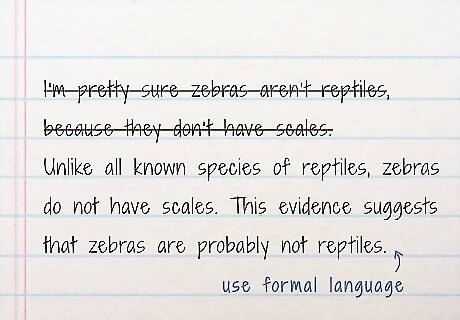
Stick to formal language. When you’re writing an essay using TEEL paragraphs, express yourself in a formal way to help your writing flow better and sound more credible. Avoid contractions (like “can’t” or “that’s”), slang, and writing that sounds like your regular speech. For example, don’t write something like, “I’m pretty sure zebras aren’t reptiles, because they don’t have scales.” Instead, you might write, “Unlike all known species of reptiles, zebras do not have scales. This evidence suggests that zebras are probably not reptiles.”
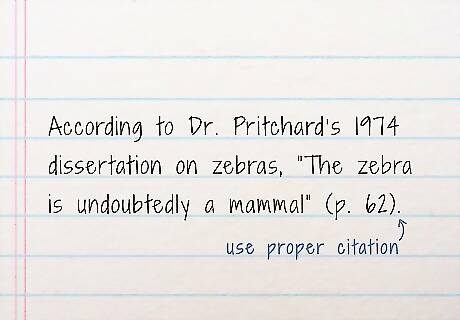
Check the formatting of any quotes or citations. If you use a quote as evidence to support your topic sentence, use quotation marks (“ ”) to indicate that you are using someone else’s words. Make sure you indicate the source of the quote as well. For example: According to Dr. Pritchard’s 1974 dissertation on zebras, “The zebra is undoubtedly a mammal” (p. 62). You can also use an indirect quote, where you rephrase or summarize what someone else said in your own words. If you do this, you must still indicate where the information came from. If you need to leave a word or phrase out of a quote, indicate that something is missing with ellipses (…). For example, “The zebra is related to other equine mammals, including…the horse.” If you have to change or add a word, use brackets. For example: According to her diary, “[Veronica] thought that zebras were insects.”
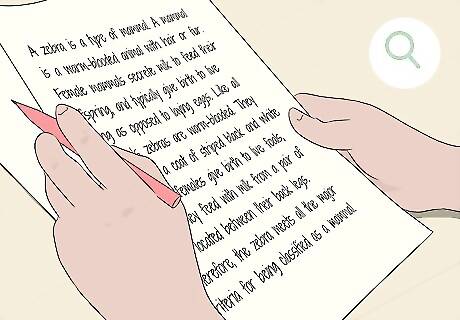
Proofread your paragraph. Look over your completed TEEL paragraph. Make sure that it flows logically and makes sense. In addition to making sure that all of the elements of the TEEL structure are there, check for typos, spelling errors, and grammatical mistakes. Correct any problems you find. You might find it helpful to read your paragraph out loud since your ears sometimes pick up on problems that your eyes miss.




















Comments
0 comment